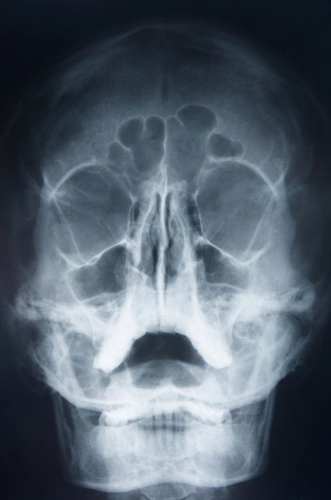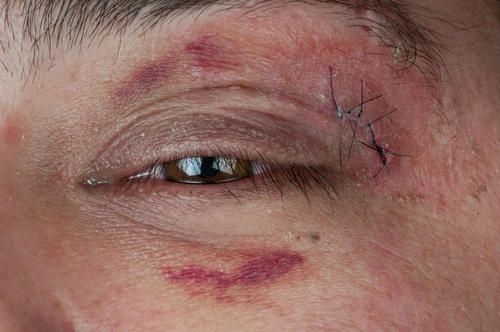Don't Let Faulty Coding Cut Into Your Laceration Repair Reimbursement

Find the right answers to these clinical scenarios.
Laceration repairs are among the most common procedures performed in dermatology practices – and along with those common procedures come some common coding mishaps.
How well do you have your laceration repair coding sewn up? Take a look at the questions below, then read on for our expert answers elsewhere in this issue.
Question 1: Your dermatologist performs laceration repair for an 18-year-old male patient for a cut that he received from broken glass. The laceration was 4.5 cm long and present on the right thigh area. Since there was glass shards interspersed in the wound, your dermatologist had to spend a lot of time in removing all the pieces of embedded glass. After the debridement, the dermatologist closed the wound with a single layer of sutures. What CPT® code should you report?
A. 12001
B. 12002
C. 12031
D. 12032
Question 2: Your dermatologist repairs a 2.0 cm laceration of the scalp (dermis and epidermis), and a 3.4 cm laceration of the scalp involving multi-layer closure. What CPT® code or codes should you report?
A. 12002
B. 12001 and 12032
C. 12001 x 2
D. 12032
Question 3: The dermatologist performs simple repair of two lacerations: a 3.0 cm laceration of the left hand and a 2.1 cm laceration of the scalp. What CPT® code or codes should you report?
A. 12002
B. 12002 x 2
C. 12001, 12002-59
D. 12002, 12001-59
Question 4: True or false: If a dermatologist performs a simple laceration repair, and the next day the patient returns with bleeding from the wound and the dermatologist has to repeat the repair, you cannot code for the repeat repair.
Check Out How You Fared
See if your answers from our coding quiz match with our answers below.
Answer 1: C. If your dermatologist didn’t mention the extensive debridement that he performed, you’d be prompted to report 12002 (Simple repair of superficial wounds of scalp, neck, axillae, external genitalia, trunk and/or extremities [including hands and feet]; 2.6 cm to 7.5 cm). But in this case, you can report 12032 (Repair, intermediate, wounds of scalp, axillae, trunk and/or extremities [excluding hands and feet]; 2.6 cm to 7.5 cm).
Reimbursement tip: If you look at the above example, the CPT® code 12002 has 3.09 non-facility total relative value units (RVUs), meaning that will fetch you reimbursement of $110.48 when calculated using the 2014 conversion factor of $35.7547. On the other hand, code 12032 has 8.54 RVUs that will pay out $305.35, which means that you will lose out on approximately $195 if you fail to identify the extensive debridement factor.
Answer 2: B. Report the service as 12001 (Simple repair of superficial wounds of scalp, neck, axillae, external genitalia, trunk and/or extremities [including hands and feet]; 2.5 cm or less) and 12032. If the repairs involve different depths (intermediate versus simple) and/or different anatomic sites represented by different codes, you should separately report the repairs.
Pointer: If the repairs involve anatomic sites that represent different CPT® codes (such as neck versus lip), you can’t add the repair length for a single code. Pay attention to code body groupings, because these may change according to the repair class. For instance, CPT® includes hands, feet, and/or extremities in the same anatomic site for simple repairs, but exclude hands and feet from intermediate repair codes for extremities.
Answer 3: A. When the dermatologist performs a repair in the same classification (simple, intermediate, or complex) of two distinct lacerations in an anatomical grouping that is covered within one series of CPT® codes – e.g., 12001-12007 for simple repairs of the scalp, neck, axillae, external genitalia, trunk or extremities (including hands and feet), coders should add the lengths of the repair, rather than report the two repairs separately.
In this case, you would add 3.0 cm to 2.1 cm and report 12002 for a 5.1 cm repair.
Don’t miss: Note, however, that the anatomical groupings do not remain constant in the different repair levels. For example, while in the simple repair codes, repairs to the trunk are grouped with the scalp, neck, axillae, external genitalia and extremities, in the complex repair category the trunk has its own series of CPT® codes – 13100-13102 (Repair, complex, trunk…).
Answer 4: False. The correct answer depends on the code used to report the intimal closure, notes Pamela Biffle, CPC, CPC-P, CPC-I, CPCO, owner of PB Healthcare Consulting and Education Inc. in Austin, Texas.
You are allowed to report a second unit of the code for the procedure performed on the second day because the simple laceration repair codes, 12001-12021, have zero global days. This means that any procedure performed on the succeeding days of the first procedure can be claimed for separately.
However: If the dermatologist had initially performed an intermediate repair (such as CPT® code 12031, Repair, intermediate, wounds of scalp, axillae, trunk and/or extremities [excluding hands and feet]; 2.5 cm or less), the global period for that procedure is 10 days, and you would not be able to report the second procedure.
Example: The dermatologist performed laceration repair on a patient’s scalp. The coder reported 12001 for the procedure performed. The patient returned on day two with bleeding from the wound. Upon examination, the dermatologist found that the wound was open and repeated the laceration repair.
In this case, you would report the same CPT® code (12001) for the repeat repair that you reported for the initial repair. Because the procedure has zero global days, you do not have to append a modifier such as 76 (Repeat procedure or service by same physician or other qualified health care professional) or 78 (Unplanned return to the operating/procedure room by the same physician or other qualified health care professional following initial procedure for a related procedure during the postoperative period) to the second unit of 12001 that you are reporting for the laceration repair performed on the second day.
Dx code: Consider assigning V58.31 (Encounter for change or removal of surgical wound dressing) to the second unit of 12001 to reflect that the service was intended to address a problem with the original dressing and sutures rather than initial treatment of a laceration.
Tip: You can look up the global days of any procedure at Codify or at https://www.cms.gov/apps/physician-fee-schedule/search/search-criteria.aspx.
Alternate: If both closures in the prior example were simple, you should not report 12001 for the 2.0 cm laceration plus 12002 (…2.6 cm to 7.5 cm) for the 3.4 cm laceration. Instead, you should code for 2.0 cm + 3.4 cm = 5.4 cm simple repair, scalp, which is a single unit of 12002.




